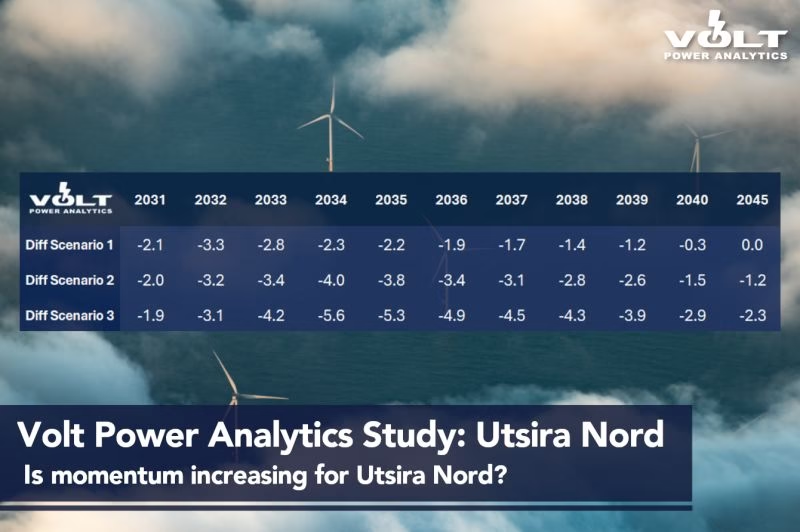
The price impact is more limited when looking further out on the curve, as electrolyser demand increases in surrounding price areas and therefore dampens the price effect.
Key takeaways:
- Increased offshore wind power in Southern Norway will lead to a change in the utilisation of the hydropower and a more robust power system.
- This anticipation change leads to a reduction in power prices in both 2031 and 2032.
- A similar trend appears in 2033, ahead of further capacity expansion in 2034.
Although the exact date on which offshore wind production from Utsira Nord will commence is uncertain, the effects of the new renewable production in Southern Norway can already be estimated. Using Volt Power Analytics’ base case as a reference, which includes only 500 MW capacity operational from 2040, we have evaluated three different scenarios for the build-out of Utsira Nord.
Our base case can be considered rather cautious regarding the development of the floating offshore technology, due to costs and lack of clarity in support schemes for this project. All prices are in real 2025 terms.
We have evaluated three different scenarios for the build-out rate of Utsira Nord:
- Scenario 1 has 500 MW as Volt’s base case but developed from 2032 instead of 2040.
- Scenario 2 includes an additional 500 MW developed from 2034 compared to Scenario 1.
- Scenario 3 includes an extra 1000 MW developed from 2034, in addition to Scenario 1.
Power prices in NO2 show a sensitivity to new offshore wind production from Utsira Nord of about 2 EUR/MWh (2.4 øre/kWh) per 500 MW installed capacity.
The build-out of the offshore wind also impacts the hydropower production in Southern Norway. We observe that the year prior to Utsira Nord starting to come online, hydropower production increases as hydropower producers are looking to maximise the income from the water distribution.
Offshore wind will play a crucial role in contributing to a higher power surplus in Norway. It opens many new opportunities for establishing new industry, further electrification of existing industry and in general a more robust power system in Norway utilising the full dynamics of storable hydro in reservoirs and good wind conditions in the North Sea.
